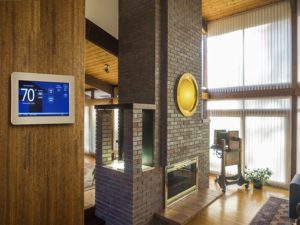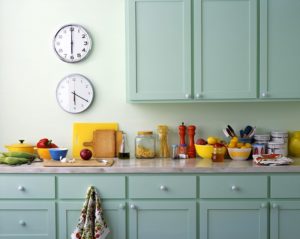Most of us have a nagging issue or two in our homes that we would like to fix. Perhaps your kitchen is just too dark to work in comfortably, or your bathroom is still living in the 1960s.
Good news: The update might be easier and less costly to make than you may think. Costs will vary depending upon where you live, and whether you can do all or some of the job yourself, but the average price of all the solutions below is around $1,000 or less.
- House is too cold or too hot
If your house is too cold in winter, or too hot if you live in a warm climate, here’s a solution that can help fix this issue dramatically: Add insulation to your attic or crawl space.
There are several types of insulation to choose from. Two of the most common types are fiberglass and cellulose. And then you can choose between rolled insulation, which is laid down on the attic floor, or blown-in insulation.
Regardless of what type of insulation you choose, and whether you choose to install it yourself or hire someone to do it, you can expect your house to be approximately 7-10 degrees warmer in the winter, and 7-10 degrees cooler in the summer, just from the attic insulation alone. That’s a noticeable difference!
As an added bonus, you can save up to several hundred dollars per year on your heating and cooling bills.

Adding insulation to your attic can help keep your home at a comfortable temperature year-round.
- Kitchen is too dark
The “fatal flaw” of many kitchens is simply not having enough light. Fortunately, you can find several possible lighting updates to install for well under $1,000.
For example, add a beautiful “focal point” pendant light to instantly make your kitchen better lit and more stylish. Or add can lights or track lighting in a working area of the kitchen.
Another option is under-cabinet lighting. It gives your kitchen a more modern feel and makes a great “night-lighting” option as well.
Depending on the size of your kitchen, and what styles of lights you choose, you can possibly install all three of these types of lights for around $1,000.
Combining pendant, can, and under-counter lighting provides the perfect mix to illuminate your kitchen.
- Kitchen cabinets are dated
Here’s another way to refresh the look of your kitchen for a modest investment. Update your kitchen cabinets by painting them a fresh new color. Then, swap out the old hardware for something more modern and striking.
You’ll find several brands of premium glossy paint on the market to give your cabinets a professional-looking finish, whether you hire someone to paint the cabinets for you or decide to tackle the job yourself. Visit a local paint store — rather than a hardware store — and ask the staff to recommend a brand and type of paint for your project.
Also, old, tarnished hardware can make your cabinets look older and more dated than they actually are. So, installing some bright, shiny handles and knobs can make a huge difference in the overall look of your kitchen.

A fresh coat of paint in a lively color can wake up a tired kitchen.
- Bathroom decor is out of style
Is your bathroom living in the past? Fortunately, you can find many ways to update your bathroom for a reasonable price, and most of these projects can be accomplished by a DIYer.
The changes you make really depend on what your bathroom needs. So, feel free to mix and match which updates work for you. Generally, you should be able to make several of the updates on the list below and keep your budget under $1,000.
Sample list of bathroom updates and materials cost
New vanity: $130-$300
Add tile backsplash above vanity: $6-$17 per square foot
New medicine cabinet with mirror: $50-$300
New toilet: $100-$300
New faucet: $50-$200

For a serene, modern look, stick to a neutral pallet, clean lines, and minimal embellishment.
- Front door is a bit dull
Nothing says “Welcome” to your home like a beautiful exterior, and your front door is the focal point. If yours is slightly lackluster, don’t worry about it! This fix gives big bang for your buck.
Option 1: Repaint the door. For a bare-bones update to a wood door, you can always repaint or restain it.
Option 2: Replace the door. Replacing a front door is a great option, and you can find a wide range of styles and types of doors to choose from. You can expect to pay between $600 and $1,000 for a new door, including professional installation.

A bright red door offers a perfect pop of color on a home’s exterior.
Just a simple update or two can make a big difference in how much you love and appreciate your home.

